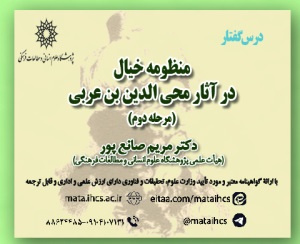مطالعه جامعه شناختی عوامل زمینه ساز رفتارهای مخاطره آمیز در بین دانش آموزان (مورد مطالعه: دانش آموزان دوره متوسطه دوم شهر تبریز) (مقاله علمی وزارت علوم)
درجه علمی: نشریه علمی (وزارت علوم)
آرشیو
چکیده
با توجه به افزایش رفتارهای مخاطره آمیز در بین دانش آموزان کشور و اهمیت دوران نوجوانی و آسیب پذیری نوجوانان در موقعیت های تنش زا، پژوهش حاضر با هدف مطالعه دلایل زمینه ساز رفتارهای پرخطر در بین دانش آموزان صورت گرفته است.پژوهش حاضر، از نظر هدف کاربردی، از نظر زمانی مقطعی و از نظر شیوه اجرا کیفی است. جمعیت آماری پژوهش شامل دانش آموزان دوره متوسطه دوم شهر تبریز در مناطق پنج گانه آموزش و پرورش هستند که 57 نفر از آن ها به روش نمونه گیری هدفمند انتخاب شدند. به منظور اطمینان از حصول اعتبار پژوهش از درگیری مستمر و طولانی مدت، کنترل داده ها توسط برخی از مشارکت کنندگان و جست وجوی توافق بین اعضای تیم تحقیق در روند کدگذاری و تحلیل، عرضه کامل یافته ها و تکنیک تثلیث بهره گرفته شد. داده ها از طریق مصاحبه های نیمه ساختاریافته، گردآوری و با رویه های نظام مند کدگذاری استراوس و کوربین در سه مرحله باز، محوری و انتخابی کدگذاری و تحلیل شدند.براساس تحلیل داده ها، دلایل زمینه ساز رفتارهای پرخطر دانش آموزان شامل عوامل روان شناختی، عوامل خانوادگی، عوامل اجتماعی، عوامل فرهنگی و عوامل آموزشی هستند.دلایل و شرایط فردی، اجتماعی، فرهنگی، اقتصادی، آموزشی در پدیدآمدن و گسترش رفتارهای مخاطره آمیز دانش آموزان نقش دارند و کاهش هریک از کنش ها نیازمند برنامه ریزی های کوتاه مدت، میان مدت و بلندمدت و اجرای برنامه های متنوع آموزشی در سطح خرد و کلان است.Studying the Underlying Reasons of Risky Behaviors (Case Study: Second Grade Students of Secondary School in Tabriz city)
Given the escalating prevalence of hazardous behaviors among students, the critical nature of adolescence, and the susceptibility of adolescents to stressful situations, the current study sought to investigate the underlying causes of such behaviors.With regard to its objective, this study can be classified as applied research; in terms of time frame, it is cross-sectional; and in terms of methodology, it is qualitative. A purposeful sampling method was employed to select 57 second-grade pupils from secondary schools in the five regions of educationin Tabriz city, who comprise the statistical population of the study. To ensure the validity of the research, triangulation, continuous and long-term engagement, data control by a subset of participants, and consensus-building among members of the research team during the coding and analysis phases, as well as comprehensive presentation of findings, were implemented. The data were obtained via semi-structured interviews and subsequently subjected to coding and analysis in accordance with Strauss and Corbin’s systematic coding procedures, which consisted of three stages: open, axial, and selective.The underlying causes of students' hazardous behaviors, according to the analysis of the data, are psychological, familial, social, cultural, and educational-related factors.A multitude of factors and circumstances—individual, social, cultural, economic, and educational—significantly contribute to the development and proliferation of hazardous behaviors among students. Implementing a variety of educational programs at the micro and macro levels, in addition to short-term, medium-term, and long-term strategies, are necessary to reduce each issue.






